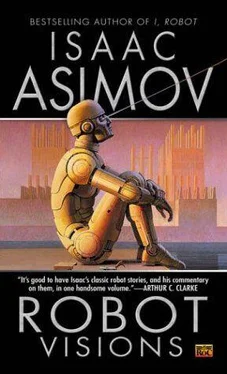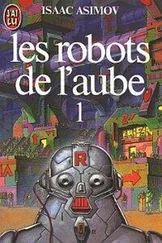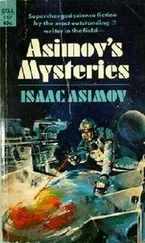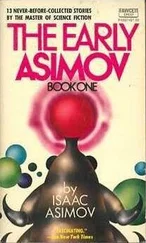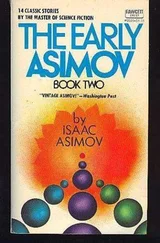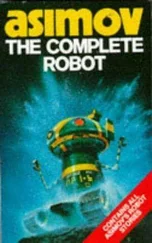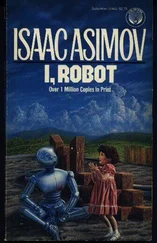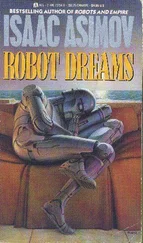Isaac Asimov - Robot Visions
Здесь есть возможность читать онлайн «Isaac Asimov - Robot Visions» весь текст электронной книги совершенно бесплатно (целиком полную версию без сокращений). В некоторых случаях можно слушать аудио, скачать через торрент в формате fb2 и присутствует краткое содержание. Жанр: Фантастика и фэнтези, на английском языке. Описание произведения, (предисловие) а так же отзывы посетителей доступны на портале библиотеки ЛибКат.
- Название:Robot Visions
- Автор:
- Жанр:
- Год:неизвестен
- ISBN:нет данных
- Рейтинг книги:5 / 5. Голосов: 1
-
Избранное:Добавить в избранное
- Отзывы:
-
Ваша оценка:
- 100
- 1
- 2
- 3
- 4
- 5
Robot Visions: краткое содержание, описание и аннотация
Предлагаем к чтению аннотацию, описание, краткое содержание или предисловие (зависит от того, что написал сам автор книги «Robot Visions»). Если вы не нашли необходимую информацию о книге — напишите в комментариях, мы постараемся отыскать её.
Robot Visions — читать онлайн бесплатно полную книгу (весь текст) целиком
Ниже представлен текст книги, разбитый по страницам. Система сохранения места последней прочитанной страницы, позволяет с удобством читать онлайн бесплатно книгу «Robot Visions», без необходимости каждый раз заново искать на чём Вы остановились. Поставьте закладку, и сможете в любой момент перейти на страницу, на которой закончили чтение.
Интервал:
Закладка:
Capek called these artificial human beings “robots,” which is a Czech word for “forced workers,” or “slaves.” In fact, the title of the play stands for “Rossum’s Universal Robots,” the name of the hero’s firm.
In this play, however, what I call “the Frankenstein complex” was made several notches more intense. Where Mary Shelley’s Monster destroyed only Frankenstein and his family, Capek’s robots were presented as gaining emotion and then, resenting their slavery, wiping out the human species.
The play was produced in 1921 and was sufficiently popular (though when I read it, my purely personal opinion was that it was dreadful) to force the word “robot” into universal use. The name for an artificial human being is now “robot” in every language, as far as I know.
Through the 1920s and 1930s, R U.R. helped reinforce the Frankenstein complex, and (with some notable exceptions such as Lester del Rey’s “Helen O’Loy” and Eando Binder’s “Adam Link” series) the hordes of clanking, murderous robots continued to be reproduced in story after story.
I was an ardent science fiction reader in the 1930s and I became tired of the ever-repeated robot plot. I didn’t see robots that way. I saw them as machines-advanced machines -but machines. They might be dangerous but surely safety factors would be built in. The safety factors might be faulty or inadequate or might fail under unexpected types of stresses, but such failures could always yield experience that could be used to improve the models.
After all, all devices have their dangers. The discovery of speech introduced communication-and lies. The discovery of fire introduced cooking-and arson. The discovery of the compass improved navigation-and destroyed civilizations in Mexico and Peru. The automobile is marvelously useful-and kills Americans by the tens of thousands each year. Medical advances have saved lives by the million amp;-and intensified the population explosion.
In every case, the dangers and misuses could be used to demonstrate that “there are some things humanity was not meant to know,” but surely we cannot be expected to divest ourselves of all knowledge and return to the status of the australopithecines. Even from the theological standpoint, one might argue that God would never have given human beings brains to reason with if He hadn’t intended those brains to be used to devise new things, to make wise use of them, to install safety factors to prevent unwise use-and to do the best we can within the limitations of our imperfections.
So, in 1939, at the age of nineteen, I determined to write a robot story about a robot that was wisely used, that was not dangerous, and that did the job it was supposed to do. Since I needed a power source I introduced the “positronic brain.” This was just gobbledygook but it represented some unknown power source that was useful, versatile, speedy, and compact-like the as-yet uninvented computer.
The story was eventually named “Robbie,” and it did not appear immediately, but I proceeded to write other stories along the same line-in consultation with my editor, John W. Campbell, Jr., who was much taken with this idea of mine-and eventually, they were all printed.
Campbell urged me to make my ideas as to the robot safeguards explicit rather than implicit, and I did this in my fourth robot story, “Runaround,” which appeared in the March 1942 issue of Astounding Science Fiction. In that issue, on page 100, in the first column, about one-third of the way down (I just happen to remember) one of my characters says to another, “Now, look, let’s start with the Three Fundamental Rules of Robotics.”
This, as it turned out, was the very first known use of the word “robotics” in print, a word that is the now-accepted and widely used term for the science and technology of the construction, maintenance, and use of robots. The Oxford English Dictionary, in the 3rd Supplementary Volume, gives me credit for the invention of the word.
I did not know I was inventing the word, of course. In my youthful innocence, I thought that was the word and hadn’t the faintest notion it had never been used before.
“The three fundamental Rules of Robotics” mentioned at this point eventually became known as “Asimov’s Three Laws of Robotics,” and here they are:
1. A robot may not injure a human being, or, through inaction, allow a human being to come to harm.
2. A robot must obey the orders given it by human beings except where such orders would conflict with the First Law.
3. A robot must protect its own existence as long as such protection does not conflict with the First or Second Law.
Those laws, as it turned out (and as I could not possibly have foreseen), proved to be the most famous, the most frequently quoted, and the most influential sentences I ever wrote. (And I did it when I was twenty-one, which makes me wonder if I’ve done anything since to continue to justify my existence.)
My robot stories turned out to have a great effect on science fiction. I dealt with robots unemotionally-they were produced by engineers, they presented engineering problems that required solutions, and the solutions were found. The stories were rather convincing portrayals of a future technology and were not moral lessons. The robots were machines and not metaphors.
As a result, the old-fashioned robot story was virtually killed in all science fiction stories above the comic-strip level. Robots began to be viewed as machines rather than metaphors by other writers, too. They grew to be commonly seen as benevolent and useful except when something went wrong, and then as capable of correction and improvement. Other writers did not quote the Three Laws-they tended to be reserved for me-but they assumed them, and so did the readers.
Astonishingly enough, my robot stories also had an important effect on the world outside.
It is well known that the early rocket-experimenters were strongly influenced by the science fiction stories of H. a. Wells. In the same way, early robot-experimenters were strongly influenced by my robot stories, nine of which were collected in 1950 to make up a book called I, Robot. It was my second published book and it has remained in print in the four decades since.
Joseph F. Engelberger, studying at Columbia University in the 1950s, came across I, Robot and was sufficiently attracted by what he read to determine that he was going to devote his life to robots. About that time, he met George C. Devol, Jr., at a cocktail party. Devol was an inventor who was also interested in robots.
Together, they founded the firm of Unimation and set about working out schemes for making robots work. They patented many devices, and by the mid-1970s, they had worked out all kinds of practical robots. The trouble was that they needed computers that were compact and cheap-but once the microchip came in, they had it. From that moment on, Unimation became the foremost robot firm in the world and Engelberger grew rich beyond anything he could have dreamed of.
He has always been kind enough to give me much of the credit. I have met other roboticists such as Marvin Minsky and Shimon Y. Nof, who also admitted, cheerfully, the value of their early reading of my robot stories. Nof, who is an Israeli, had first read I, Robot in a Hebrew translation.
The roboticists take the Three Laws of Robotics seriously and they keep them as an ideal for robot safety. As yet, the types of industrial robots in use are so simple, essentially, that safety devices have to be built in externally. However, robots may confidently be expected to grow more versatile and capable and the Three Laws, or their equivalent, will surely be built in to their programming eventually.
I myself have never actually worked with robots, never even as much as seen one, but I have never stopped thinking about them. I have to date written at least thirty-five short stories and five novels that involve robots, and I dare say that if I am spared, I will write more.
Читать дальшеИнтервал:
Закладка:
Похожие книги на «Robot Visions»
Представляем Вашему вниманию похожие книги на «Robot Visions» списком для выбора. Мы отобрали схожую по названию и смыслу литературу в надежде предоставить читателям больше вариантов отыскать новые, интересные, ещё непрочитанные произведения.
Обсуждение, отзывы о книге «Robot Visions» и просто собственные мнения читателей. Оставьте ваши комментарии, напишите, что Вы думаете о произведении, его смысле или главных героях. Укажите что конкретно понравилось, а что нет, и почему Вы так считаете.
